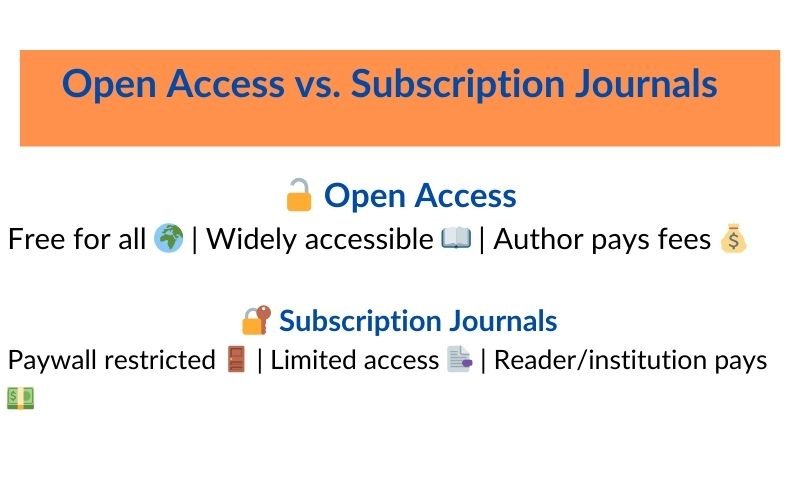Choosing between open access (OA) and subscription-based journals depends on your research goals, funding availability, target audience, and institutional policies. Here’s a comparison to help you decide:
1. Open Access Journals
These journals provide free and unrestricted access to published research.
✅ Pros:
- Wider readership and greater visibility for your work.
- Faster dissemination of knowledge.
- Compliance with funding agencies that mandate open access.
- Encourages collaboration and citation potential.
❌ Cons:
- Article Processing Charges (APCs): Many OA journals charge fees (can be high).
- Predatory journals: Some OA publishers have poor peer-review processes.
- Institutional support required: Some researchers rely on grants or institutions to cover APCs.
2. Subscription-Based Journals
These require institutions or individuals to pay for access.
✅ Pros:
- Often high-impact and reputed with rigorous peer review.
- No direct cost for authors in most cases (except page charges).
- Established indexing in major databases.
❌ Cons:
- Limited readership (behind paywalls).
- Restricted access can reduce citations and reach.
- Delayed dissemination, as institutions take time to subscribe.
Which One Should You Choose?
- If you want maximum reach, faster sharing, and compliance with funders, choose Open Access (if you have funding for APCs).
- If journal prestige and no APCs are priorities, and paywall access isn’t a concern, go for Subscription Journals.
- If unsure, check for hybrid journals—they allow open access for a fee while offering traditional subscription options.

Leave a Reply